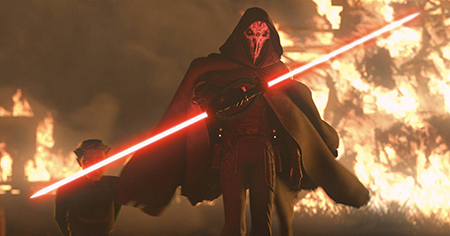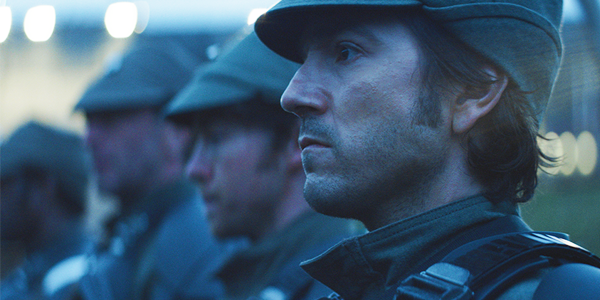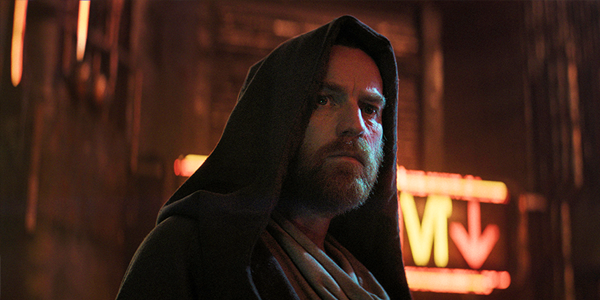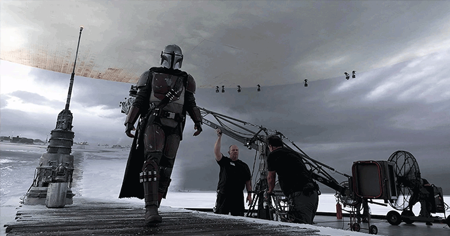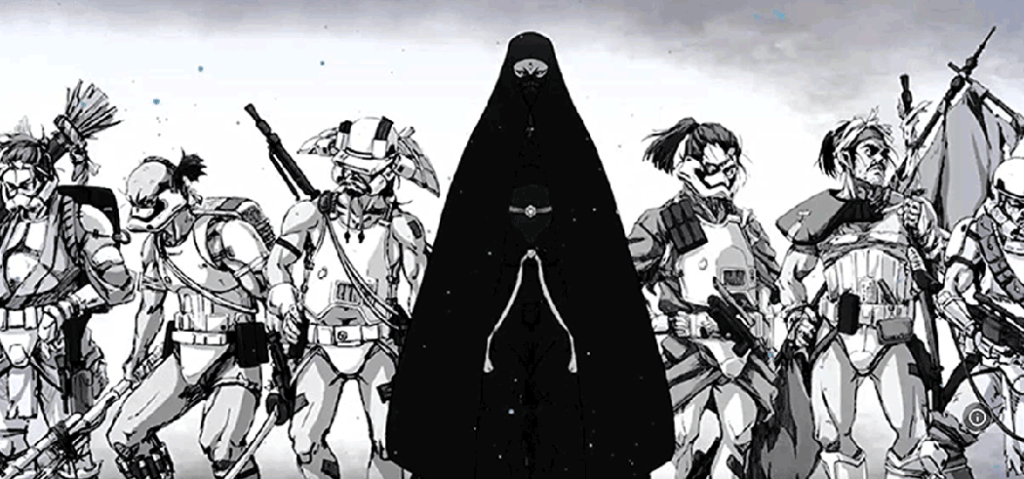
review | Star Wars: Visions
The quality of some of these Star Wars-themed animated shorts can vary, but the series as a whole is well worth checking out
by Dennis Burger
September 27, 2021
I honestly can’t decide if Star Wars: Visions represents a huge risk for Lucasfilm and Disney+ or a sure bet. So let’s just agree that it’s off the beaten track but following a path that seems obvious in retrospect, and leave it at that. The new anthology series comprises nine disconnected shorts built on a single premise: Give the Star Wars mythos to nine different anime directors spread across seven anime studios and let their imaginations run wild, with no imposed ties to the existing Star Wars timeline or canon.
Given that the shorts range from 14 to 23 minutes long, with the average running length coming in at right around 17 minutes, it’s understandable that none of the concepts are fully developed, and there’s not a lot by way of story in some of them. But that really sort of misses the point. I think the intent here was to riff on the themes and iconic visuals for the Galaxy Far, Far Away from a different perspective. And in that respect, it’s a stunning success. Every single film in this collection is a wonder to behold in terms of color, design, detail, and motion (the latter despite the fact that a lot of it seems to be animated on threes or fours).
Does that mean you’ll like it? Well, of course not. Even as a self-described Star Wars scholar, there were episode of Visions I simply hated. And there were a couple (“Lop and Ochō” and “Tatooine Rhapsody”) that had potential but turned me off with their hyperbolic, uber-kinetic cutesiness and sensory overload.
But there are five shorts in particular that deserve your attention, even if you’re not a fan of Japanese animation in all its diverse and disparate forms, nor a dedicated consumer of every ancillary Star Wars program to roll out on Disney+.
“The Duel,” directed by Takanobu Mizuno and animated by Kamikaze Douga, the studio behind JoJo’s Bizarre Adventure, is such a perfect but unusual blending of Kurosawa, Leone, and Lucas that it feels essentially Star Wars despite breaking so many rules of the universe.
“The Village Bride,” directed by Hitoshi Haga and animated by Kinema Citrus (Tokyo Magnitude 8.0) is a hauntingly beautiful little fable that resonates despite its predictability.
“The Elder,” directed by Masahiko Otsuka and animated by Studio Trigger (Little Witch Academia) is delightfully creepy and, in its English dub, features a great performance by David Harbor of Stranger Things and Black Widow fame.
“Akakiri,” directed by Eunyoung Choi and animated by Science SARU (probably best known in America for their work on the trippy Adventure Time episode “Food Chain”), is an absolute audiovisual masterpiece and a deliciously ambiguous morality tale at that.
But the best of the bunch, for my money, is “The Ninth Jedi,” directed by Kenji Kamiyama and animated by the legendary studio Production I.G, best known for Ghost in the Shell. Of all the shorts here, this one really felt like it should have been developed into a feature-length film, even if most of its substance comes from its style.
Check out those five shorts first if you’re unsure about whether or not you want to dip your toes into this weird experiment. If I may, though, I’d like to recommend watching each of them twice: Once in the original Japanese and once in the dub of your choice. As for the latter, I can only speak to the quality of the English dubs, but they’re incredibly well done throughout, with great voice acting and none of the awkward fumbling that normally comes from trying to match vocals to lip movements animated for a different language.
Furthermore, turning off the subtitles gives you the opportunity to soak in the Dolby Vision presentation of the animation, which looks a bit different from short to short, but always impresses with gorgeous contrasts, sumptuous color, and oodles of detail. (I did notice a brief moment of aliasing in one shot of one short, but I think that was a consequence of production, not the online delivery.)
In either the original Japanese or in dubbed English, the Dolby Digital+ 5.1 soundtracks vary a bit in terms of intensity and expansiveness but always deliver the goods on dialogue intelligibility and musical fidelity. By far the best of the bunch in terms of sound is “Akakiri,” which benefits from a decidedly Eastern percussion soundtrack almost entirely devoid of musical notes, but which nonetheless feels right at home in the Star Wars universe, or at least this version of it.
Also worth noting is the fact that Visions is accompanied by a pretty healthy collection of bonus features: 5 to 8 documentaries for each short that give some background on the filmmakers, their love of Star Wars, and their unique approaches to each episode.
All in all, Star Wars: Visions isn’t going to be everyone’s cup of blue milk, but it’s nonetheless exciting to see Lucasfilm exploring, taking risks, and expanding the scope of what Star Wars can look like. It may not have been entirely successful for me, given that I really only enjoyed five of the nine shorts, but still—I want to see more of this sort of thing going forward.
Dennis Burger is an avid Star Wars scholar, Tolkien fanatic, and Corvette enthusiast who somehow also manages to find time for technological passions including high-end audio, home automation, and video gaming. He lives in the armpit of Alabama with his wife Bethany and their four-legged child Bruno, a 75-pound American Staffordshire Terrier who thinks he’s a Pomeranian.
PICTURE | The Dolby Vision presentation of the animation, which looks a bit different from short to short, always impresses with gorgeous contrasts, sumptuous color, and oodles of detail
SOUND | The Dolby Digital+ 5.1 soundtracks vary a bit in terms of intensity and expansiveness but always deliver the goods on dialogue intelligibility and musical fidelity
© 2025 Cineluxe LLC


